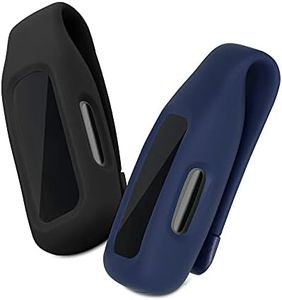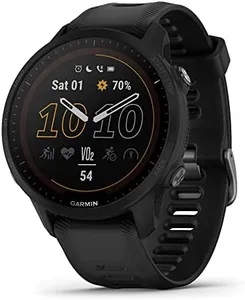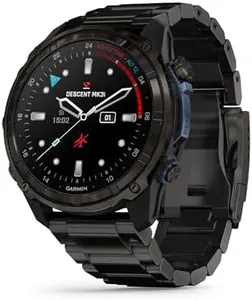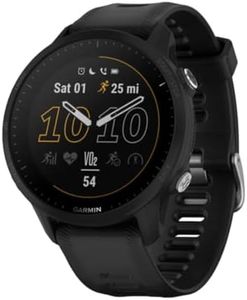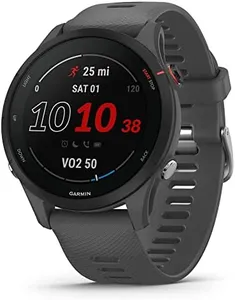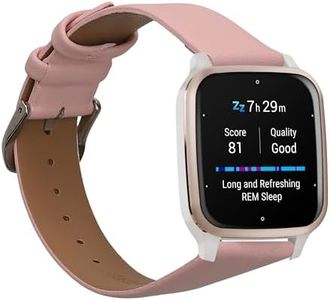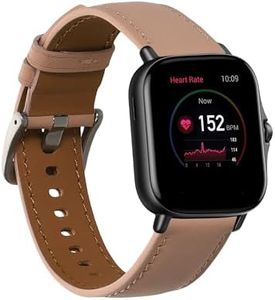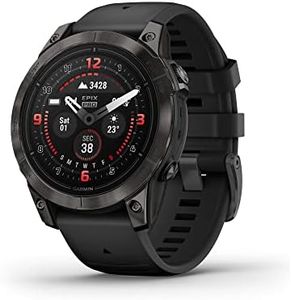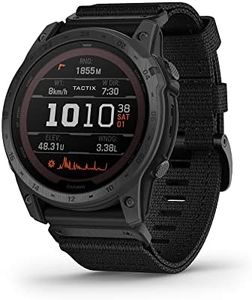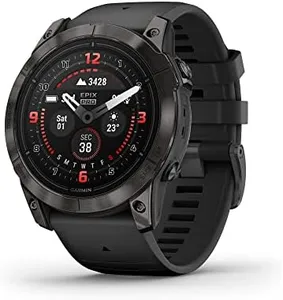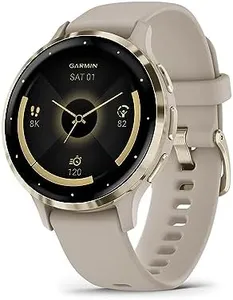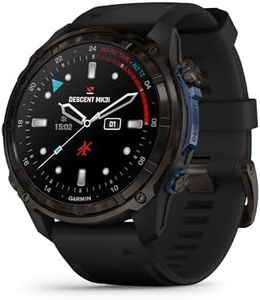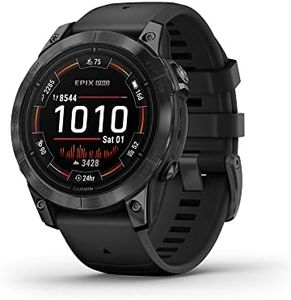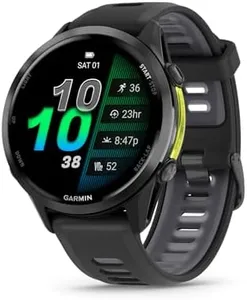We Use CookiesWe use cookies to enhance the security, performance,
functionality and for analytical and promotional activities. By continuing to browse this site you
are agreeing to our privacy policy
10 Best Garmin Watches
From leading brands and best sellers available on the web.Buying Guide for the Best Garmin Watches
Choosing the right Garmin watch can make a big difference in how well it fits your lifestyle and helps you achieve your goals. Garmin offers a wide range of watches, from simple fitness trackers to advanced multisport smartwatches. To find the best fit, think about how you plan to use the watch—whether it's for running, cycling, swimming, hiking, or just everyday activity tracking. Consider which features are most important for your needs, such as GPS, heart rate monitoring, battery life, and smart notifications. Understanding the key specifications will help you narrow down your options and pick a watch that matches your activities and preferences.GPS AccuracyGPS accuracy refers to how precisely the watch can track your location and distance during outdoor activities. This is important if you want reliable data for running, cycling, hiking, or navigation. Some watches have basic GPS, while others use multiple satellite systems (like GLONASS or Galileo) for improved accuracy. If you mostly exercise outdoors and care about precise tracking, look for watches with multi-system GPS support. For casual use or indoor activities, basic GPS may be sufficient.
Battery LifeBattery life tells you how long the watch can operate before needing a recharge. This is crucial if you plan to use the watch for long workouts, multi-day hikes, or just want to avoid frequent charging. Battery life can range from a few days to several weeks, depending on features and usage. Watches with more advanced features (like always-on GPS or music playback) tend to use more battery. If you do long activities or travel often, prioritize longer battery life; for everyday use, shorter battery life may be acceptable.
Heart Rate MonitoringHeart rate monitoring measures your pulse directly from your wrist, helping you track your fitness, stress, and recovery. Some watches offer basic heart rate tracking, while others provide advanced metrics like VO2 max, heart rate variability, and training effect. If you want detailed health insights or train seriously, look for watches with advanced heart rate features. For general fitness tracking, basic heart rate monitoring is usually enough.
Activity and Sport ProfilesActivity and sport profiles are pre-set modes for tracking different types of exercise, such as running, swimming, cycling, yoga, or strength training. The number and variety of profiles can vary widely. If you participate in multiple sports or want to track specific activities, choose a watch with a wide range of sport profiles. If you mainly do one type of exercise, a watch with fewer but focused profiles may be sufficient.
Water ResistanceWater resistance indicates how well the watch can handle exposure to water, such as rain, sweat, or swimming. Ratings range from splash-proof to fully waterproof for diving. If you plan to swim, shower, or be outdoors in all weather, look for higher water resistance (like 5 ATM or more). For everyday wear or light rain, basic water resistance is usually enough.
Smart FeaturesSmart features include things like notifications, music storage, contactless payments, and app support. These can make your watch more useful in daily life, letting you leave your phone behind or stay connected on the go. If you want your watch to double as a mini-smartphone, look for models with more smart features. If you prefer a simpler device focused on fitness, you may not need as many smart functions.
Display Type and SizeDisplay type and size affect how easy it is to read your watch in different conditions. Some watches have color touchscreens, while others use simpler, always-on displays for better battery life. Larger displays are easier to read, especially during exercise, but may make the watch bulkier. If you want a bright, interactive screen, choose a color touchscreen; if you prefer longer battery life and simplicity, a basic display may be better. Consider your wrist size and comfort as well.
Durability and Build QualityDurability and build quality refer to how well the watch can withstand bumps, drops, and tough environments. Materials like stainless steel, reinforced plastic, or sapphire glass can make a watch more rugged. If you do outdoor adventures or work in harsh conditions, look for a watch with higher durability. For everyday use, standard build quality is usually sufficient.
